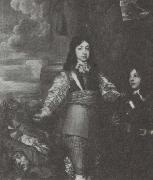Wholesale Oil Painting No Minimum |
|||||||||||
|
|
|||||||||||

|
|||||||||||
|
|
|
||||||||
William Dobson1610-1646 English William Dobson Locations William Dobson (March 4, 1610 ?C October 28, 1646) was a portraitist and one of the first notable English painters, praised by his contemporary John Aubrey as the most excellent painter that England has yet bred. Dobson was born in London the son of a decorative artist, and was apprenticed to William Peake and probably later joined the studio of Francis Cleyn. He is believed to have had access to the Royal Collection and to have copied works by Titian and Anthony Van Dyck, King Charles I chief painter. The colour and texture of Dobson work was influenced by Venetian art, but Van Dyck style has little apparent influence on Dobson. Van Dyck himself discovered Dobson when he noticed one of the young artists pictures in a London shop window. He introduced Dobson to the King, who had Dobson paint himself, his sons and members of the court. When Van Dyck died in 1641, Dobson probably succeeded him as sergeant-painter to the King, though proof is lacking. During the English Civil War Dobson was based at the Royalist centre of Oxford and painted many leading Cavaliers. His portrait of the future Charles II as Prince of Wales at the age of around twelve is a notable baroque composition, and perhaps his finest work. He also painted the Duke of York, Prince Rupert of the Rhine and Prince Maurice. Charles II when Prince of Wales, circa 1642 or 1643.Around sixty of Dobson works survive, mostly half-length portraits most of them dated from 1642 or later. The thick impasto of his early work gave way to a mere skim of paint, perhaps reflecting a wartime scarcity of materials. After Oxford fell to the Parliamentarians, in June 1646, Dobson returned to London. Now without patronage, he was briefly imprisoned for debt and died in poverty at the age of thirty-six. Dobson is regarded as a talented painter with a fine sense for colour and good powers of observation. However, an entirely English training such as Dobson could not be first rate in the early 17th century and he had technical weaknesses[citation needed]. There are examples of Dobson work at Tate Britain and the National Portrait Gallery in London and at several English country houses. The most comprehensive study of Dobson and his work is William Dobson, 1611?C1646 an exhibition catalogue written by M. Rogers for a 1983 exhibition at the National Portrait Gallery. |
||||||||
|
|
||||||||
Charles II as a boy commander
Charles II as a boy commander Painting ID:: 50842 |
mk216
mk216 |
|||||||
|
CONTACT US |

